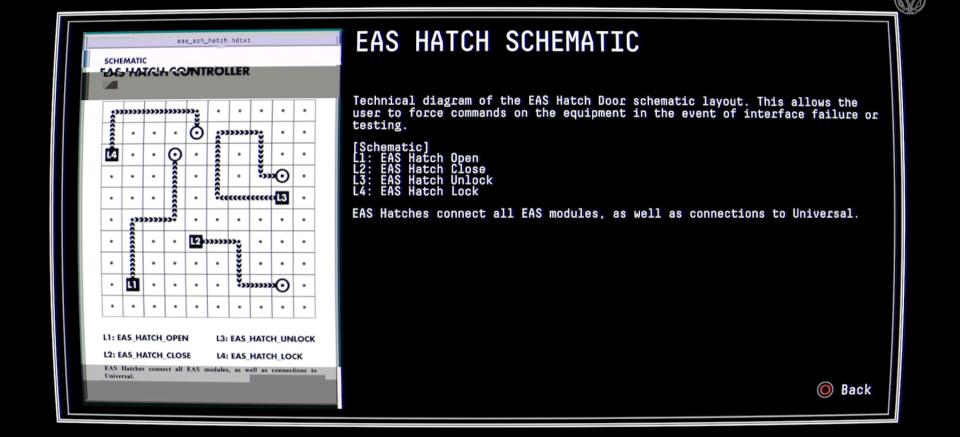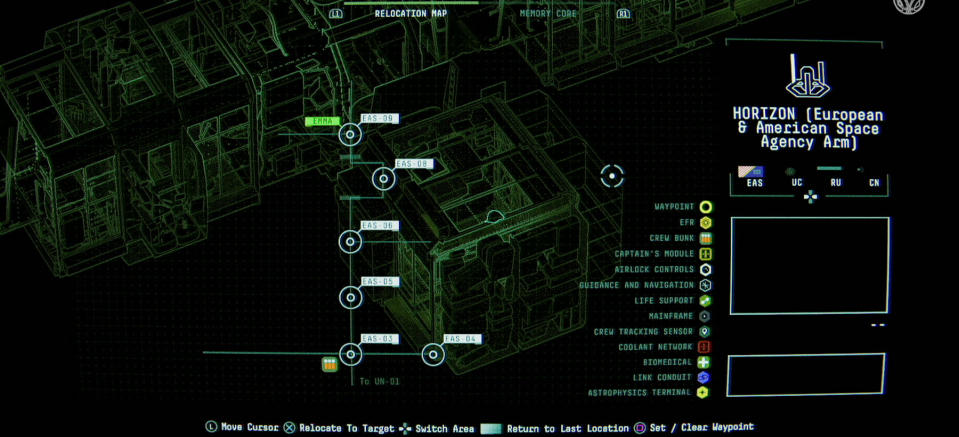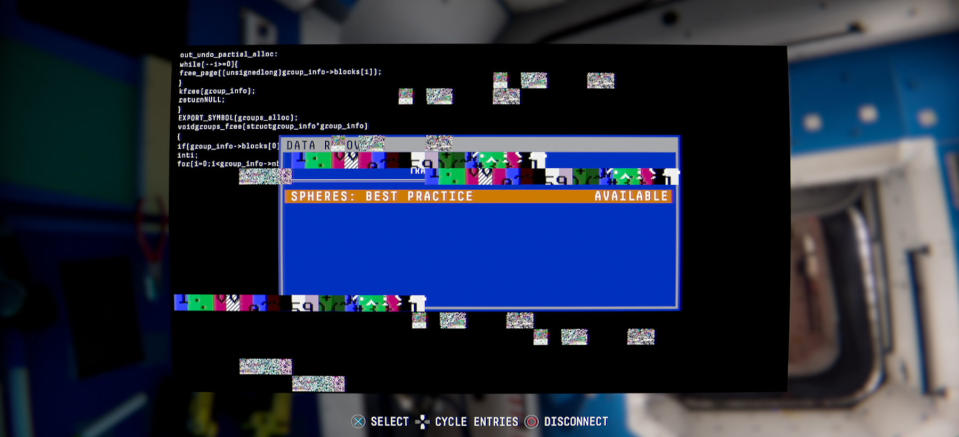'Observation' is a gripping space puzzler with an AI hero
A game about changing camera feeds and figuring out fictional software.
Many video games are set in space. Most cast you as a human super-soldier or plucky science-type trying to untangle a truly terrible situation. Not Observation. The latest game from No Code, the Scottish studio behind Stories Untold, makes you play as a piece of artificial intelligence instead. It's a fascinating choice that changes how you move around the spaceship, solve basic puzzles and interact with the game's protagonist, a medical officer called Emma Fisher. If you've ever wondered what it would be like to live inside a computer, or hack your way through a modern spacecraft, this is the game for you.
The story starts with a desperate Fisher trying to reach Space Center Houston. Something has happened to the ship, a low-orbit vessel with a central hub and three distinct arms run by Russian, Chinese and Western astronauts. Unable to contact the rest of the crew, Fisher turns to the ship's Systems, Administration and Maintenance (S.A.M.) assistant. (That's you!) At first, you can only view the world through the cameras positioned in each ship module. Most of these rooms, or sections, have at least two video feeds and switching between them is mandatory if you want to peek behind obtrusive beams and bulky pieces of equipment.
As you glance around the station, the camera feed will flicker and reveal some grainy film-tape artifacts. It's a constant reminder of your technological boundaries; unlike Fisher, you can't reach out and grab a clipboard or DSLR camera off the wall. You're disconnected from the environment, like a security officer watching grainy CCTV feeds from afar.
Your human companion then grants you access to SamOS, a menu system with a suite of sleuthing tools that slowly grow over the course of the game. You start with a Relocation Map that lets you jump between modules and generally zip around faster than Fisher. It's also littered with colorful icons that let you track her whereabouts and find useful parts of the ship, such as the experimental fusion reactor and airlock controls. If you get disoriented or can't figure out where to go next, the map can almost always help you.

At first, the map and camera tools are enough to stabilize the vessel. One of your early tasks is to disconnect a damaged module that is putting stress on the rest of the station. There's a fictional detachment procedure that is part mini-game, part puzzle -- a series of codes and timed button prompts that imitate the old-but-trustworthy software on many spacecraft.
Once you've mastered the basic interactions, Fisher will let you temporarily access a Guidance Sphere. The floating camera will take you closer to important objects on the ship, such as laptops and clipboards, which have story-critical schematics and audio-log emails.
Every piece of evidence is stored in your Memory Core, a stylized archive accessible from the SamOS menu. You'll occasionally find data fragments or corrupted diagrams that need to be paired with a hand-drawn note before they make sense. Combining them is straightforward and strangely enjoyable due to the circular interface, which links each node with a colorful wire. By the end, you should have a Core that looks like a colorful Spirograph.

The Guidance Sphere is also necessary for a few trips outside the space station. It's a nice change of pace but can, at times, be mildly infuriating if you lose your sense of direction. Most of the modules look the same and only some have their corresponding number stenciled on the side. If you accidentally spin or tilt the camera, it can be devilishly tricky to find a specific control panel or the airlock that you began the spacewalk from.
Over time, you'll unlock new parts of the station and investigative tools, including a full crew tracker with live medical information. Fisher is a competent astronaut but gradually needs you to complete tougher, multi-step missions to save the ship and its surviving members.
At one point, for example, I was asked to send an SOS message. That meant finding the captain's laptop and guessing that the passcode was related to a nearby post-it note that said the word "graduation." I eventually figured out the clue, obtained the authorization code and visited the astrophysics terminal to retrieve some coordinates. These were buried in a grainy, telescopic image littered with random objects and meaningless labels. I eventually found the correct object and entered the relevant digits into my built-in communicator.

The game is littered with these point-and-click-inspired puzzles. In fact, they're the bulk of the game. You spend the vast majority of your time trying to hunt down the necessary information to open doors and repair workstations. Some are straightforward while others are absurdly obtuse. You can ask Fisher to repeat the task, which occasionally reveals a mild hint about what to do next. For the most part, though, you're working solo. An almost-sentient piece of software trying to figure out how the ship and its crew fit together.
It can be daunting when you boot up a computer and discover a fictional interface that you've never seen before. I spent minutes, sometimes hours, flicking random buttons and scouring the ship for clues on how the alien software might work. Figuring out these micro-puzzles can be vexing if you're not in the right frame of mind or misinterpret Fisher's instructions. My anger often turned to laughter, though, when I imagined how this behavior and general lack of intelligence would appear to other characters. A super-smart AI that spends hours trying to open an airlock? I'm surprised Fisher didn't give up and throw me in the trash.
On the flipside, of course, there's an indescribable sense of satisfaction when you finally solve a problem. I just wish the game had a proper hint system for people like me who sometimes, just sometimes, need a gentle steer in the right direction.

I won't spoil the central mystery, which revolves around Fisher, Sam and a secret mission being carried out aboard the ship. I will say, though, that I was left underwhelmed by most of the twists and the climactic resolution. The sub-par story doesn't detract from the game's excellent puzzles, though, and imaginative take on artificial intelligence. If you feel burned out on astronaut-themed games, I don't blame you. We've had a ton in recent years, including Tacoma, Adr1ft and more fantastical fare such as No Man's Sky, the rebooted Prey and Elite Dangerous. Observation has a genuinely fresh take, though, which is worth playing if you enjoy tough adventure games and clunky but utterly charming software design.
It's fun to don a virtual spacesuit, but it turns out being a helpful software assistant can be just as exhilarating.
Observation is available now for $24.99/£19.99 on PlayStation 4 and the Epic Games Store.




























